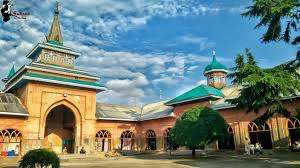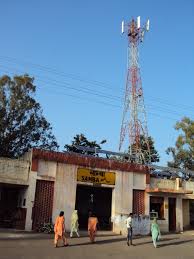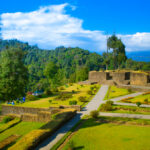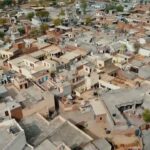Now Reading: Best places visiting in Udhampur
-
01
Best places visiting in Udhampur
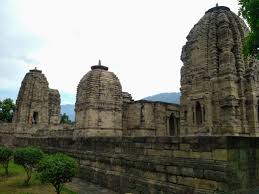
Best places visiting in Udhampur
1.Shankri Devta
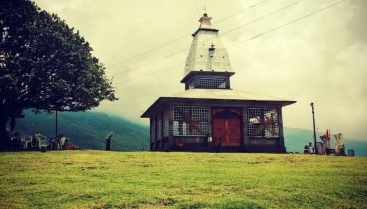
Shankri Devta temple rests atop a hill in village Meer under block Panchari at a picturesque location containing varied vegetation of grasslands and hills along with forested areas. The pucca road connects Block Headquarter Panchari together with Village Meer to Udhampur town.
The District Administration schedules the Shankri Devta Mela at the beginning of April and throughout May annually.
Youth Services and Sports Department of Udhampur conducted rural sports competitions which combined Kabbadi events with Tug of war contests and weight lifting competitions for both recreational purposes and student talent recognition in cultural and sports activities. The district administration established complete water access and medical care systems together with power supply and transport services and sanitary facilities throughout the area. Different state and centrally sponsored government schemes receive education to the public through department stalls set up at the mela site. Various security arrangements assured the availability of water facilities and medical services as well as power provision at the site. Local traders maintained their Jalebi, Pakora, bangles and toy stalls. During the first mela day J&K Indian Style Wrestling Association together with Local Dangal Committee staged wrestling matches where famous wrestlers from distinct areas competed.
2.Moungri Cave
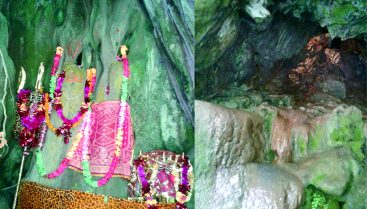
During ancient times the settlement known by name Sonara now exists as the village Moungri. The name Sonara describes territory with numerous natural water springs. Water springs receive their Dogri language name as Naaras. The local legend states this location was a home where Nag Devta resided while hundreds of stone springs naturally flowed at one time. The area still maintains this number of natural water springs despite passing years.
A local villager found the small stone shrine of Lord Shiva while obtaining revenge according to traditional beliefs from the Kansar Shrine. Agriculture remaining as the key occupation of the villagers they disrupted the stone formation and threw it into the Kansar stream in order to clear the farming pathway. The villagers automatically faced disaster after completing this action. Using intense haste the shrine was pulled from the flowing river before local people built a temple on top of a nearby hill. The temple still stands as a testimony to their labors
The Moungri Cave Shrines exist in Moungri village located in the Sonara land which contains one hundred water springs and serves as the residence of Nag Devta within the Panchari Block of District Udhampur under the leadership of Shri Swatantra Dev Kotwal. This holy place features a naturally occurring rock Shiv Lingam that reaches nine 1/2 feet while Parvati shares a joined stone representation with Shankhas, Amrit Kund, Kansar Shrine, Damroo statue and Nandi.
3.Sudh Mahadev And Mantalai
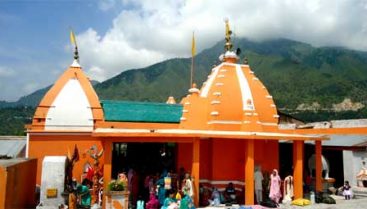
This highly revered Shiva temple is located at a distance of 42 Kms from Patnitop and 112 Kms from Jammu ,Legend has it that after bathing at a spring called Gouri Kund, just short of Sudh Mahadev ,the Goddess Parvati would worship the Shivling here that is believed to be at least 3000 years old .The temple also houses a black marble statue of local Shiva and Parvati .A trishul of Lord Shiva is also preserved here.Pilgrims in large number visit the shrine on the full moon night Of Sawan to participate in the festival to worship Lord Shiva. The underground stream Devak flowing from Sudh Mahadev is deemed similarly significant to Ganges whereas portions of this water disappear beneath rocks until reaching a distant location. Tourist Saraj under J&K Tourism Development Corporation management operates as the main accommodation option alongside Dharamshala offered by Dharamarth Trust.
The scenic forest area of Mantalai (1450 meters) lies approximately several kilometers past Sudh Mahadev. Legend claims that Lord Shiva married goddess Parvati at this location while Swami Dhirendra Brhamchari constructed a tree-shaped house and an unfinished assortment of projects including an airfield and hostel at the site. Visitors can enjoy panoramic mountain scenery by walking through the woods to Naina Devi which lies 5 Kms from Mantalai.
4.Krimachi
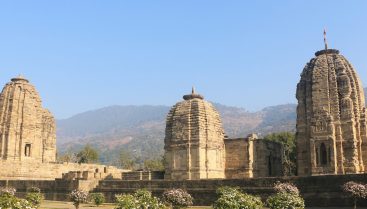
Krimachi stands as a small village within Udhampur district of Jammu & Kashmir UT. The village exists 12 km north of Udhampur through Udhampur-Lander road while maintaining a distance of 67 km from Jammu. Five temples together with two tiny shrines form the complex. The valley exists in mountain ranges that reach 730 meters above the mean sea level. The drainage system of this area relies on Birunala Stream as well as Krimachi.
The local people believe that the site served travelers using the Jammu-Kashmir path which passed through Banihal. The foundation of this site was established by a Mahabharata modern figure according to local records. Local legends describe Krimachi as Bhuti’s capital before it was one of the principalities in Jammu that descended from Daya-Karan’s rule over Kashmir. The descendents of king Daya- Karan ruled for numerous centuries during which their clan was known as “Bhutials” according to Diwan Narsingh Dass Nargis. Himmat Singh emerged as the final ruler of the dynasty before Maharaja Ranjit Singh defeated him to transfer the powers of his territory to Raja Gulab Singh. Bhuti entered into the realm of Jammu Kingdom during the year a.d. 1834.
5.Devika
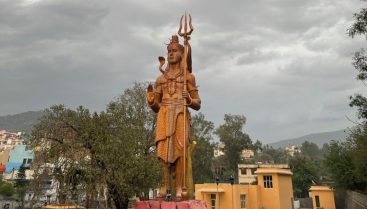
Udhampur city is also famous city of Devika river. Devika is also called as the sibling of river Ganges.
In Nilmat Puran, the seven-century and written book by Nela Muni, it describes that Devika River is an incarnation of mother Goddess Parwati to help people residing in an area lying between Ravi and Chenab rivers known Mader Desha is a region of Devika River that appeared on Shiv Ratri. The lord Shaiva himself remains side by side with his consort Uma in form of Shiv Lingas at eight places along Devika river.
The river at present is running under its sandy bottom.In Devi Mahatmays it is written that it is not required to perform any Japa or some ritual to get the spiritual benefits from this Pilgrimage Site, only the touch of the Devika waters or bathe in her waters will serve the purpose of spiritual benefits. Water flows as 1ft deep digging in sand bed. Cremation on the banks of Devika is considered as pious as the seer Sabamuni was who was in the habit of performing cremation on the banks of Ganges at Kashi.













